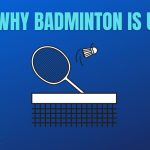- Different Types Of Surfaces For Badminton Courts
- Factors To Consider When Choosing A Badminton Surface
- Advantages And Disadvantages Of Different Surfaces
- Popular Surfaces In Professional Badminton Tournaments
- Surface Recommendations For Beginners
- Considerations For Indoor And Outdoor Surfaces
- How Surface Influences Gameplay
- Maintenance And Care Tips For Badminton Surfaces
- Common Issues And Solutions For Badminton Surfaces
- Evolution Of Badminton Surfaces Over Time
- Future Trends In Badminton Surfaces
- Importance Of Proper Surface Preparation
- Comparison With Other Racquet Sports Surfaces
- Personal Insights And Experiences With Different Surfaces
- Frequently Asked Questions On What Type Of Surfaces Can Badminton Be Played On
- Conclusion
Badminton can be played on various surfaces such as grass, concrete, asphalt, and wooden floors. Each surface has its own advantages and disadvantages, affecting the game’s speed and player movements.
For example, grass courts tend to slow down the shuttlecock, making the game slower and more suitable for beginners, while wooden floors provide a fast-paced game with quick movements. Concrete and asphalt surfaces are commonly used for recreational play but may cause more stress on players’ joints.
The choice of surface depends on the players’ skill level, preferences, and the purpose of the game, whether it is for casual play or professional competitions.

Different Types Of Surfaces For Badminton Courts
Badminton can be played on a variety of different surfaces. Indoor hardwood courts provide a smooth and controlled environment, perfect for precise shots. Synthetic court surfaces offer durability and grip, ensuring players can move freely and quickly. Gravel and concrete outdoor courts are commonly found in parks and recreational areas, providing a solid and sturdy surface for intense gameplay.
Grass courts offer a softer and more natural feel, allowing players to experience the game in a refreshing outdoor environment. Lastly, sand courts, although less common, provide a unique challenge with their unpredictable surface. Each of these surfaces presents its own set of advantages and considerations, catering to different playing preferences and styles.
Whether indoors or outdoors, the choice of surface can greatly impact the overall experience and performance in a game of badminton.
Factors To Consider When Choosing A Badminton Surface
When choosing a surface for badminton, it is important to consider factors such as safety, gameplay, durability, maintenance, cost, and accessibility. The surface should prioritize safety and injury prevention to minimize the risk of accidents and maintain player well-being. Additionally, the surface should not negatively impact gameplay, ensuring a smooth and consistent playing experience for competitors.
Durability and maintenance are crucial aspects to consider, as the surface should be able to withstand regular use and be easy to clean and maintain. Cost and accessibility are also important factors, with the surface being the best affordable badminton racket and easily accessible to players of all levels.
Considering these factors will help in selecting the ideal surface for enjoying the game of badminton.
Advantages And Disadvantages Of Different Surfaces
Badminton can be played on a variety of surfaces, each with its own advantages and disadvantages. Hardwood courts offer a smooth and consistent playing surface, perfect for precise footwork and quick movements. Synthetic court surfaces, on the other hand, provide a more shock-absorbent experience, reducing the risk of injuries.
Gravel and concrete outdoor courts offer durability but may be hard on the knees and joints. Grass courts provide a different playing experience, with slower shots due to the friction of the grass. Sand courts offer a unique challenge, as players need to adjust their movements to the shifting surface.
Each surface has its pros and cons, and it ultimately depends on personal preference and playing style. So, whether you enjoy the fast-paced action on hardwood or the natural feel of grass, there’s a surface out there for you to enjoy the game of badminton.
Popular Surfaces In Professional Badminton Tournaments
Badminton can be played on various surfaces, including those commonly used in professional tournaments. In the Olympic Games, players compete on specially designed hard courts. World Championships, on the other hand, often utilize wooden or synthetic surfaces to ensure optimal performance.
Major open tournaments feature a combination of these surfaces, depending on the host country’s preference. Each surface has its own unique characteristics, affecting the game’s speed and player movement. Hard courts provide faster gameplay, while wooden and synthetic surfaces offer better traction and control.
These differences require players to adapt their strategies accordingly. Whether it’s the solid courts of the Olympics, the versatile surfaces of the World Championships, or the mix found in open tournaments, badminton enthusiasts can enjoy the sport on a range of challenging and exciting playing grounds.
Surface Recommendations For Beginners
Badminton is a versatile sport that can be played on various surfaces. For beginners, it is essential to choose the right surface to enhance their skills. Some recommended surfaces include indoor wooden courts, as they offer good grip and reduce the risk of injury.
Synthetic surfaces, such as PU courts, are ideal for beginners due to their cushioning and consistent bounce. Beginners should avoid playing on grass or concrete surfaces, as these can be slippery and cause injuries. Carpet courts are also not recommended, as they can affect the speed and control of the shuttlecock.
Ultimately, beginners should prioritize safety and choose surfaces that provide adequate traction and allow them to develop their skills effectively. By selecting the appropriate surface, beginners can have an enjoyable and rewarding experience playing badminton.
Considerations For Indoor And Outdoor Surfaces
Badminton can be played on various surfaces, both indoors and outdoors. Indoor courts offer several features and benefits that enhance the gameplay experience. These include a smooth and even surface, which allows players to move swiftly and hit precise shots.
The controlled environment also eliminates external factors like wind, ensuring consistent gameplay. On the other hand, outdoor courts present unique features and advantages. They often have a more flexible surface, reducing the impact on joints and providing a softer landing.
Outdoor courts also offer ample space and a natural backdrop, enhancing the overall ambiance of the game. Whether playing on an indoor or outdoor surface, badminton enthusiasts have the flexibility to choose based on their preferences and the availability of facilities in their area.
How Surface Influences Gameplay
Badminton can be played on a variety of surfaces, each influencing gameplay in distinct ways. The surface type determines the speed at which the game is played, with smoother surfaces allowing for faster gameplay. Surfaces also impact the way the ball bounces and the trajectory it follows after hitting the ground.
A harder surface, such as a wooden or synthetic court, tends to produce a higher bounce and a faster rebound. Conversely, softer surfaces, like grass or clay courts, result in a lower bounce and slower gameplay. These variations in surface properties ultimately affect the strategy and style of play for badminton players, highlighting the importance of understanding the impact of different surfaces on the game.
Maintenance And Care Tips For Badminton Surfaces
Badminton can be played on various surfaces, both indoors and outdoors. When it comes to maintaining these surfaces, there are a few key tips to keep in mind. For indoor courts, regular cleaning is essential to remove any dust, dirt, or debris.
Sweeping the court with a soft bristle broom or using a vacuum cleaner can help keep it in good condition. Spills should be promptly cleaned up to prevent staining or damage. Outdoor courts require additional care, as they are exposed to the elements.
Regular sweeping to remove leaves, branches, or any other debris is vital. It’s also important to keep an eye out for any cracks or uneven surfaces and repair them promptly for the safety of players. By following these maintenance tips, you can ensure that your badminton surfaces provide a safe and enjoyable playing experience.
Common Issues And Solutions For Badminton Surfaces
Cracks and damage to the surface can pose significant issues for badminton players. Unfixed cracks can cause trips and falls, endangering the players. Repairing the surface promptly is vital to ensure safe gameplay. Slippery surfaces can also create traction issues, leading to accidents and injuries.
Ideally, badminton courts should have a non-slip surface to enhance player safety. Providing adequate traction through proper maintenance can help prevent unnecessary slips during matches.
Evolution Of Badminton Surfaces Over Time
Badminton can be played on various surfaces, each with its own characteristics. Throughout history, the surfaces used for badminton have evolved significantly. These changes were driven by technological advancements in surface materials and a desire to improve the sport’s performance.
In the early days, badminton was predominantly played on grass, similar to lawn tennis. However, grass proved to be challenging due to its unevenness, making the game unpredictable. This led to the development of hard courts, such as cement and concrete, which provided a more consistent playing surface.
Over time, synthetic materials like PVC and rubberized surfaces became popular for their durability and improved grip. These surfaces offer players better control and minimize injuries. Today, badminton is commonly played on a variety of surfaces, including wooden floors, tartan tracks, or synthetic mats.
Each surface choice depends on factors such as the level of play, location, and personal preference.
Future Trends In Badminton Surfaces
Badminton can be played on various surfaces, and future trends are focusing on new materials and technologies. These advancements aim to create sustainable and eco-friendly surfaces. These surfaces strive to provide optimum performance while minimizing environmental impact. Companies are developing innovative materials with advanced properties such as shock absorption, durability, and grip.
Additionally, new technologies are being incorporated to enhance playing experiences and reduce injuries. The focus is on creating surfaces that are not only safe and functional but also sustainable. With ongoing research and development, the future of badminton surfaces holds promising advancements that will elevate the game to new heights.
Importance Of Proper Surface Preparation
Proper surface preparation is of utmost importance in badminton. Surface cleaning and preparation techniques play a significant role in ensuring optimal gameplay and safety. The choice of surface can greatly impact the speed, bounce, and movement of the shuttlecock. By thoroughly cleaning and prepping the surface, players can prevent slippery conditions and reduce the risk of injuries.
Dust, dirt, and moisture must be removed to create a level playing field and maintain traction. Ensuring a smooth and even surface allows for precise footwork and swift movements. Whether it’s a hardwood floor, a concrete court, or a synthetic surface, proper preparation is crucial for an enjoyable and competitive game.
So, before stepping onto the court, remember to give some attention to the surface to enhance your performance and minimize any potential risks.
Comparison With Other Racquet Sports Surfaces
Badminton can be played on various surfaces, including tennis courts, squash courts, and pickleball courts. Tennis court surfaces provide a good option for badminton due to their smoothness and consistent bounce. Squash court surfaces, with their slightly different texture, can also be suitable for badminton.
Pickleball court surfaces, which are typically made of concrete or asphalt, may require some modifications to be suitable for badminton play. However, it is important to note that badminton is typically played on specialized badminton courts, which have an even surface and an appropriate level of grip.
These courts are specifically designed to enhance the game’s speed and agility. Whether you are playing on a tennis court, squash court, or pickleball court, it is essential to ensure that the surface is well-maintained and provides proper safety to players.
Personal Insights And Experiences With Different Surfaces
Badminton is a sport that can be played on various surfaces, each offering unique challenges and advantages. Players’ perspectives play a crucial role in determining the pros and cons of different surfaces. Artificial grass, for example, provides a smooth and fast playing field, allowing players to execute swift movements and shots.
However, it may lack the desired grip for quick changes in direction. Wooden or sprung floors offer excellent traction, but they can be slightly slower in terms of gameplay. Concrete, on the other hand, provides a solid and stable surface but may be too hard on players’ joints.
Overall, personal experiences and preferences greatly influence player opinions on different surfaces. It is essential for players to adapt their style and techniques to suit the specific conditions and challenges presented by each surface they encounter.
Frequently Asked Questions On What Type Of Surfaces Can Badminton Be Played On
What Type Of Surface Can Badminton Be Played On And Its Dimensions?
Badminton can be played on various surfaces like indoor courts with dimensions of 44 feet by 20 feet.
What Floor Surface Is Recommended For A Badminton Court?
The recommended floor surface for a badminton court is usually a wooden or synthetic material.
Can We Play Badminton On Hard Surface?
Yes, you can play badminton on a hard surface.
Can Badminton Be Played On Turf?
Yes, badminton can be played on turf.
Conclusion
Badminton can be played on a variety of surfaces, including indoor courts, outdoor grass or artificial grass courts, and even unconventional spaces like parking lots or beaches. Indoor courts offer controlled conditions and are ideal for professional competitions, while outdoor grass courts provide a more natural feel.
Artificial grass courts are a popular choice because they require less maintenance and can be played all year round. It is important to choose the right surface based on your skill level, experience, and playing preferences. Additionally, the type of shoes you wear and the weather conditions can also affect your performance and safety on different surfaces.
So whether you prefer a fast-paced game on a wooden or synthetic floor or a leisurely match on a grass court, the possibilities for playing badminton are endless. Explore the different surfaces available and find the one that suits you best.
Happy playing!

Hi My Name is Reyad Hossain Patwary i,m a passionate badminton enthusiast and creator of the BadmintonVlog.com With a deep love for the sport, i,m share valuable insights, tips, and engaging content to inspire fellow badminton lovers worldwide.










